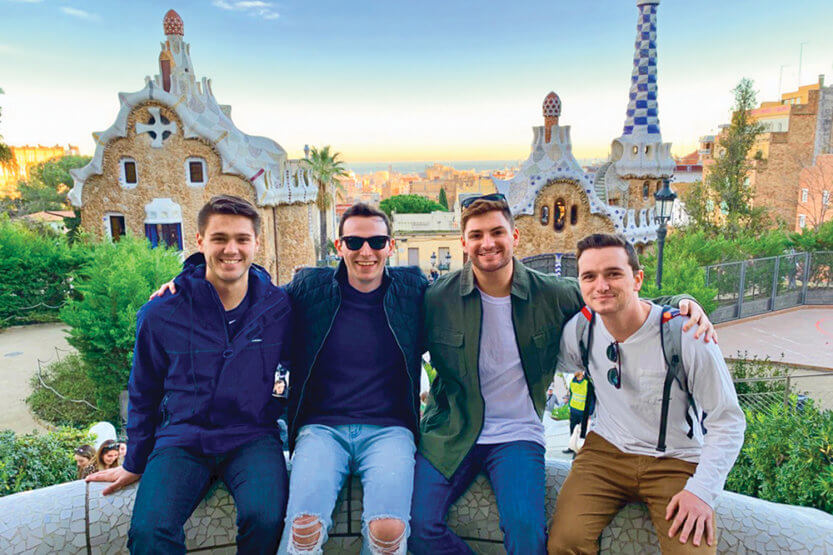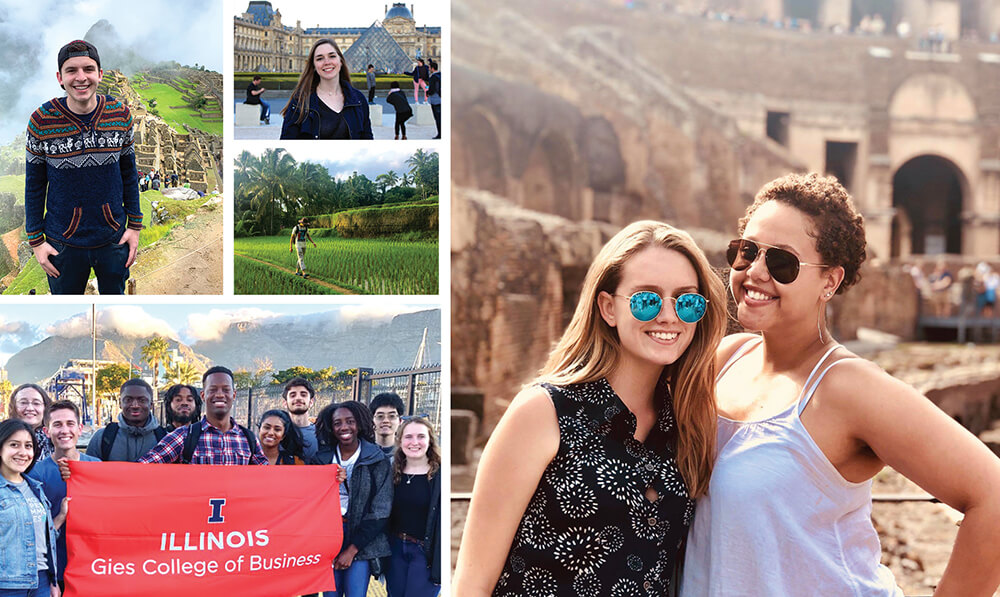Memory Lane: Expanding Horizons
 The University boasts one of the nation’s most decentralized study abroad models. Above, School of Architecture students enjoy Barcelona. (Image courtesy of Jacob Peruba)
The University boasts one of the nation’s most decentralized study abroad models. Above, School of Architecture students enjoy Barcelona. (Image courtesy of Jacob Peruba) Joan Solaún fell in love with Latin America when she was 16 years old on a trip to Cuba with her mother. In her 20s, she next fell in love with Mauricio, a Latin American who would become her husband. Solaún met him at her first job, working with foreign exchange students at the University of Pennsylvania.
But it was at Illinois where she fell in love with study abroad programs. Near its beginnings in the early 1970s, Solaún was an assistant director with the study abroad program. She was away from 1974 to 1980 when Mauricio, by then an associate professor of sociology for the University, was named the U.S. ambassador to Nicaragua. Upon her return, she stepped in to head the program and become its longest-serving director. She significantly boosted the number of reciprocal exchanges—making study abroad much more affordable—and expanded the number of places where students studied.
“When I first started, I remember only about 11 students studying abroad through our office,” she recalls. When she stepped down in 2004, 1,456 students had participated. Foreign study hit its peak of 2,422 students in 2013–14. In 2017–18, the program served 1,931 students.

The University boasts one of the nation’s most decentralized study abroad models. Programs send students to numerous global destinations, including Hong Kong; Machu Picchu, Peru; Paris and Rome. Bottom left: Gies College of Business students carry their Illinois colors across the globe to study in short-term and semester programs at top universities and participate in international summer internships. (Images courtesy of Dawson Dodds, Jonah Fialkow, Emily Isaacson, Nathaniel Tee and Talia Zimmerman)
The University boasts one of the nation’s most decentralized study-abroad models, with central operations through Illinois Abroad and Global Exchange, which offers some 110 programs in more than 45 countries. Many of the University’s colleges also run their own study abroad offices, offering an additional 250 programs.
The College of Liberal Arts and Sciences claims its French Department had Illinois’ earliest study abroad program, approved by the trustees in 1968. In the 1970s, the School of Architecture began its year-long study abroad program, believed to be the oldest of its type for the discipline. Its pioneering Versailles program defined the academic standards by which all other U.S. architecture study abroad programs are now measured. The program offers a full year of uninterrupted overseas study with dedicated faculty, sending students to Barcelona, Spain; Munich; Shanghai and Stockholm.

Daniel Moshiman (left) went on three trips to sub-Saharan Africa that prompted his current Ph.D. research on treating contaminated water. Right: Lauren Karplus (center) learned important lessons in cultural awareness during her study abroad experience in India. (Images courtesy of Daniel Moshiman and Lauren Karplus)
Lauren Karplus, ’10 LAS, a U of I education-abroad coordinator, notes that her first study abroad experience to India made her realize that she had barely scratched the surface of cultural awareness. She vividly recalls getting lost in a working-class Delhi neighborhood and winding up riding on the back of an elephant in a Hindu religious parade. “I had no cultural reference point to understand what I was experiencing, but I [will never] forget it,” she says.
Like Solaún, Karplus found her husband as a result of her love of international work. She met him as a Peace Corps volunteer in Namibia.
Which is not at all to suggest that foreign study experiences are romantic vacations away from cold Urbana-Champaign winters. In a 1988 LAS report, “Undergraduate Study Abroad 1968–88,” professor Pierre Weisz noted, “If we present our program as a hard proposition, rewarding but unlikely to satisfy yearnings for moonlight under the palm trees at Cannes … our students might take daily life under the rains with more equanimity.”
Rain or shine, today’s study abroad students find the program an ideal conduit for serious research. Daniel Mosiman, BS ’13, MS ’15 ENG, went on three trips to sub-Saharan Africa that led directly to his current Ph.D. work. He notes, however, that his most meaningful experiences have come from personal connections. His 2011 trip to Jordan coincided with the Arab Spring. He became good friends with a Jordanian who had questions about dating. For the first time, Jordanian students had places to interact without supervision. “When you go to these places and get to know the people, it humanizes them,” Mosiman says. “It gives you a much richer understanding of other cultures.”

